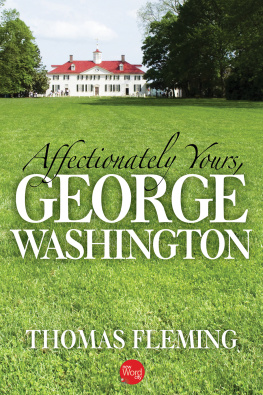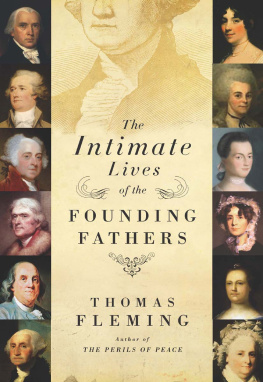Who were the Americans of 1776? Perhaps the most prevailing misconception is that they were mostly poor. The image of the hardscrabble pioneer has taken command of the American imagination. We forget that these people had been here for more than 150 years. They were definitely not frontiersmen, nor was the frontier a symbol of American enterprise and derring-do. The frontier was a place to which losers, drunks, and the landless poor emigrated. Benjamin Franklin expressed the prevailing wisdom when he remarked on a foray to western Pennsylvania during the French and Indian War, fifteen years before the Revolution: The scum of every nation is to be found on their frontiers.
The settled parts of America, as they were called in 1776, were extremely settled. In Massachusetts the last moose had been shot in 1707. In each of the thirteen colonies, a highly stratified, class-conscious society existed - with some surprising similarities to the one we have today. In the northern colonies, the wealthiest ten percent of the population owned about forty-five percent of the property. In some parts of Virginia and the Carolinas, ten percent of the taxpayers owned seventy-five percent of the property.
One of these wealthy Americans was a Virginia plantation owner named George Washington. He claimed 12,243 acres of prime Virginia soil and 24,130 acres of unimproved western land along the Kanawha and Ohio Rivers as his own. Colonel Washington, as he was called in tribute to his service in the French and Indian War, possessed 130 horses, 135 slaves, and earned as much as 3,213 a year, which translates to about $225,000 in modern dollars. When he rode to hounds at Mount Vernon, he wore a black-velvet hunting cap decorated with a silk band and handsome silver buckle, and a waistcoat of scarlet cloth and gold lace.
Along with wealthy men such as Washington and the Boston merchant, John Hancock, who had the added advantage of access to large amounts of cash, there was a surprising dispersion of wealth through the rest of the population. Some forty percent of 1776 Americans were small or medium-sized independent farmers, who largely supported themselves from their own land. A typical northern farmer owned ten head of cattle, sixteen sheep, two horses, and a team of oxen, and was usually able to sell two-fifths of his crop for cash. When artisans, shopkeepers, and innkeepers were added to this group, there emerged a thriving middle class that possessed property worth about 400 - almost $30,000 in todays currency. This was satisfying wealth in an economy in which the average landless laborer earned about 30 - around $2,000 a year.
By 1776, there was a worrisome number of landless workers in America. The farms of New England had been subdivided to the point of no return by the tendency of most married couples to have seven or eight children. But overall, the poor were not numerous enough to diminish a rather startling statistic: On a per-capita basis, the Americans of 1776 were the richest people in the civilized world.
They were also the lowest taxed, which puts a somewhat inverse spin on the Revolutionary cry: No taxation without representation. They meant it, of course, but it was not the plea of people taxed to the limit of their endurance, like the citizens of England and most other nations of Europe.
Colonial Americans fretted over the cost of living as much as their modern descendants. One prosperous craftsman in Charleston, South Carolina, spent 313 a year - about $20,000 today - to live in genteel fashion and educate his two sons at a private school. Generally, it took about 500 a year - about $40,000 - for a family to feel well off. Skilled workers, such as carpenters, earned around 90 - about $5,000 - annually. Schoolteachers made little more than a landless laborer - unless they taught at a private school, like Yale graduate Nathan Hale.
Harvard paid its professors 100 a year, roughly $6,000, and Yale did not pay its president much more. At the top of the economic pyramid were lawyers, who made as much as 3,000 a year - about the same as planters, such as Washington and merchants like Hancock.
The ultimate sign of wealth, similar to the ownership of a private yacht or airplane today, was an equipage - a coach drawn by four matched horses, with servants in livery riding outside. In 1776, there were no fewer than eighty-four of these vehicles in Philadelphia, the Revolutionary Americans capital.
Adino Paddock of Boston was the premier American coach maker. He foreshadowed Detroit by advertising used chaises and coaches at an under their value sale as early as 1759. He sold luxury coaches for 200 - about $12,000 - and ran ads telling his customers he would take old chaises from customers in part payment for new.
Some American businesses had already reached considerable size, despite British laws supposedly prohibiting them. A web of forges produced iron ore from New Jersey to South Carolina. Isaac Zane, son of a Philadelphia Quaker, ran the biggest ironworks at Winchester, Virginia. He employed 150 people and produced six tons of iron a week. By 1775, Americans were producing one-seventh of all the iron in the world. Other factories produced paper, shoes, and chocolates. By 1775, the thirteen colonies had an economy that was two-fifths the size of Englands. It was seventeen times bigger than it had been in 1700 and was clearly on its way to surpassing the economy of the mother country.
That is - or was - one of the least-known causes of the American Revolution: The British felt enormously threatened by the dynamism of American growth, both in wealth and people. In 1750, Benjamin Franklin published a study of the growth of the population that predicted Americans, on the basis of their birthrate alone, would double every twenty-five years. In a variety of inept, arrogant ways, London tried to tap into this wealth and somehow restrict Americas growth, with predictably disastrous results.
Another illusion is the image of 1776 Americans as being isolated from Europe by 3,000 miles of ocean. This was more or less true in the seventeenth and early eighteenth century. But as the British Empire grew in size and wealth, the Atlantic became a vast information highway across which streamed books, magazines, and newspapers. Americans read about the debates in Parliament within two months of their having taken place. The middle and upper classes knew a great deal about British politics - and little of it gave them a positive impression.
The British system was immensely, even breathtakingly corrupt. In a general election, the kings ministers often spent as much as 1 million to bribe voters into giving them their support. Thats more than $100 million in todays dollars. Key members of Parliament were routinely seduced with lucrative government jobs. The image of a virtuous America besieged by this corrupt royal regime had not a little to do with igniting the American Revolution.
This tendency was probably accelerated by another little-known fact: The percentage of English in the colonial population was not nearly as overwhelming as previously believed. A careful study of the first federal census in 1790 reveals that, of the total white population of two million, only 60.9 percent were English, and 14.3 percent were Scotch or Scotch Irish from Irelands Ulster province. Germans, Dutch, Swedish, French Huguenots, and southern Irish accounted for the rest, with a final six percent labeled miscellaneous. If we include 540,000 African-Americans, mostly slaves, the percentage of English in the total population dwindles even more. America was already a melting pot.
One 1776er summed it up with a look at a single household that was a walking, talking lesson in diversity. I could point out to you a family whose grandfather was an Englishman, whose wife was Dutch, whose son married a Frenchwoman, and whose present four sons have four wives from different nations.

















